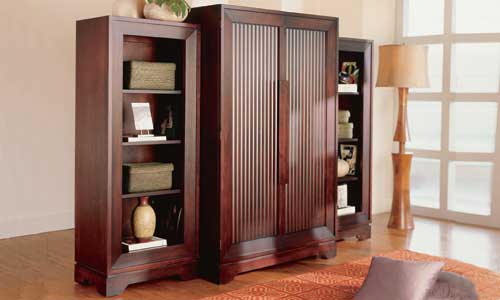Question
I am in the middle of making a 60" w by 89" tall version of the center cabinet in the image below, only with bi-fold doors. To duplicate the detail shown, my thought was to take a 1.25" round nose bit, carefully make a jig and use a router to cut the vertical fluting. My concern is loss of accuracy over 45 or so passes. Does anyone have any comments on an easier and/or more accurate way to do this?

Forum Responses
(Architectural Woodworking Forum)
From contributor M:
Can you make the panel with pieces of linear moulding glued for width? Any millshop should have fluted casings that would work.
I cut 1/4" deep V-grooves the long way in 4x8 sheets of smooth T-111-like exterior siding for a pseudo T&G finish on my garage shop. Looks just as nice but a lot cheaper than the 7/16 straight grain cedar T&G on the rest of the house. Used a 10' 1.5" box-section aluminum channel for a guide, picked up at a metals surplus yard - 2" box channel wouldn't deflect a mil, I bet. Made tick marks with a divider on a story pole to mark the spacing, to make the grooves align perfectly. A little PVC pipe tape applied to the underside of the guide where clamped so it wouldn't drift with pressure from the router. I made ~2000 lineal feet of nice straight grooves with end-on alignment. I know the material, and depth and shape of cut, etc., are a lot different than your job, but it might give you some ideas.